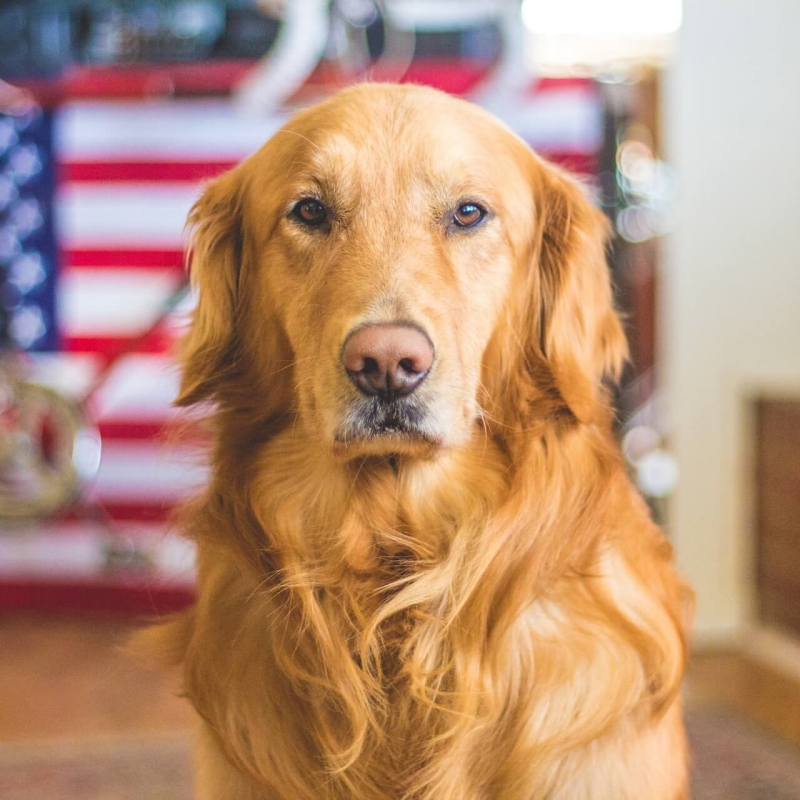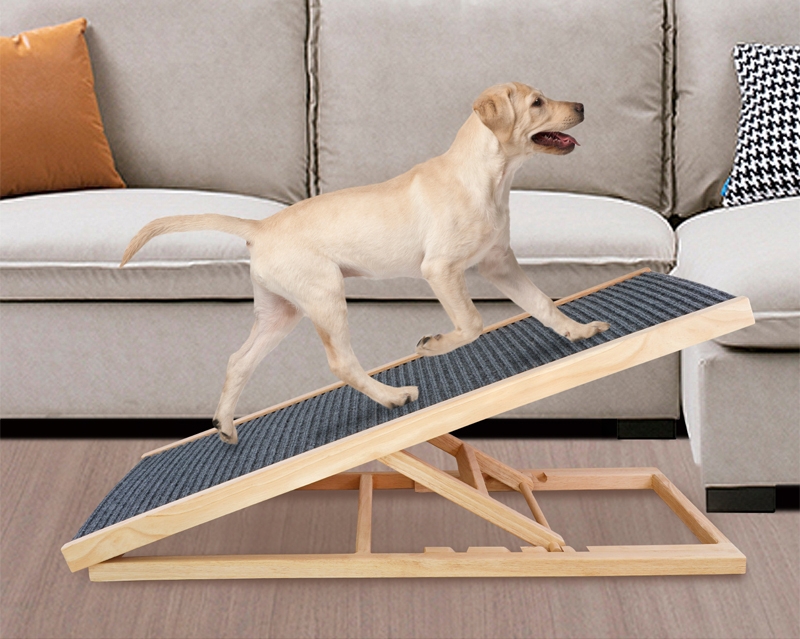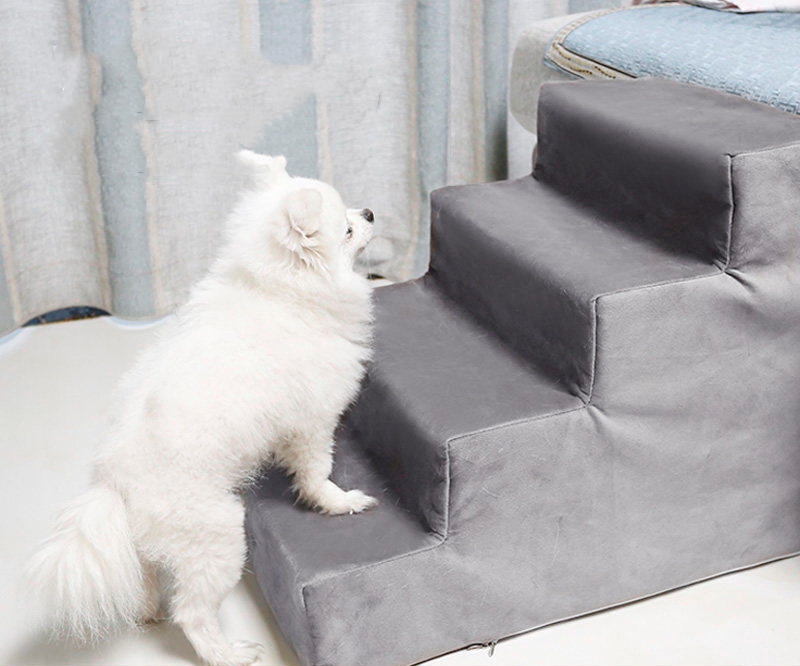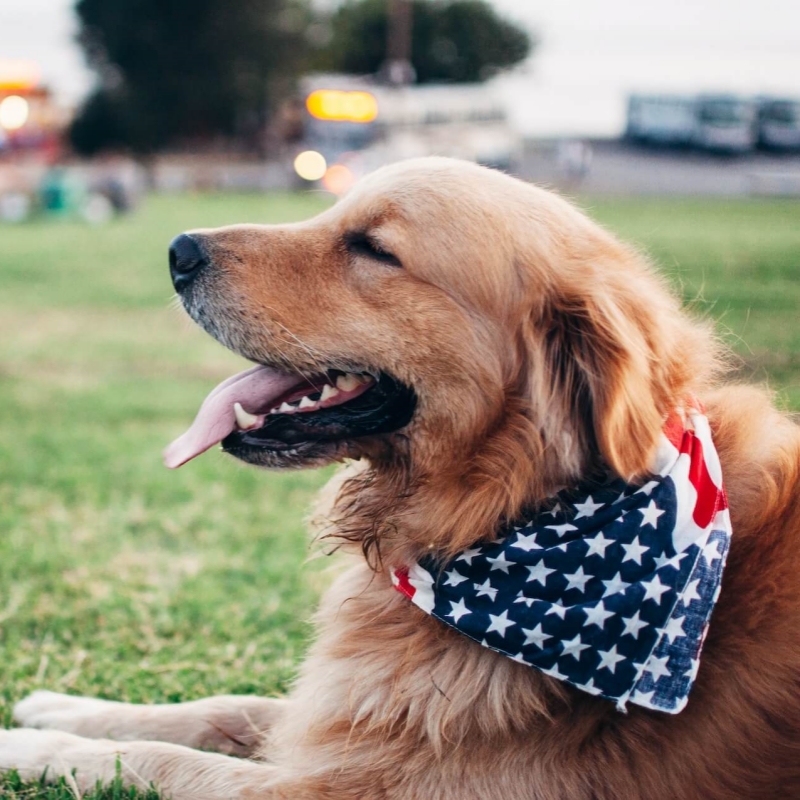
Ramp vs. Stairs: Which is the Best Solution for Your Dog’s Bedtime Routine?
For many dog owners, watching their furry friend struggle to climb onto a bed or couch can be heart-wrenching. As our pets age or face

Getting in and out of bed can be difficult for dogs as they age or if they have mobility issues. Dog ramps provide a simple solution to help them safely access beds without hurting joints or risking falls.
Ramps reduce impact and strain and give pups confidence in navigating their environment. This comprehensive guide covers everything owners need to know about dog ramps for beds.

Ramps deliver several key advantages over jumping on and off elevated beds:
The impact of jumping down from heights applies significant force and pressure on joints, especially elbows and hips. Ramps eliminate this strain over time, preserving joint health. According to veterinary research, the repetitive impact of jumping on hard surfaces is a leading cause of arthritis in dogs.
Reduces Risk of Injury
Dogs can easily lose footing and fall when moving to and from beds, leading to injuries beyond just joint issues. Wrist sprains, torn ligaments, bruising and fractures can all result from jumping and landing poorly. Ramps allow for stable, controlled ascents and descents without the impact and falling hazard.
As dogs age and develop mobility limitations, they can become increasingly hesitant about moving around and navigating their environment. Simple tasks like getting onto furniture and beds become daunting.
Ramps give senior dogs the confidence boost to comfortably access elevated surfaces and preserve their independence and self-sufficiency.
Following orthopedic surgery, ACL repairs or other lower body injuries, ramps facilitate the post-operative rehabilitation process. Rather than forcing dogs to struggle to jump, ramps allow for gradual regaining of strength, balance and mobility at their own pace. This helps accelerate recovery times.
For dogs already suffering from arthritis, hip dysplasia, degenerative joint disease and other mobility limitations, ramps make accessing beds and furniture possible without causing further pain.
The low-impact ramps allow them to enjoy lounging and sleeping spots they would otherwise potentially no longer be able to reach as their condition advances.
The cumulative wear and tear from jumping and hard landings adds up as dogs age. By reducing unnecessary joint strain, ramps help keep dogs comfortably active and mobile well into their senior years instead of being sidelined by pain and stiffness.
Not sure if your pup could use a ramp for safer access? Watch for these common indicators:
Any of these behaviors can signal the onset of mobility issues that could benefit from ramp access. Have an open conversation with your veterinarian as well for their professional assessment.
The need for ramps tends to come on gradually over time versus appearing overnight. Owners may not notice their dog is struggling until issues advance further. As dogs enter their senior years, the accumulated effects of minor injuries, arthritis and everyday wear and tear begin manifesting as decreased mobility.
Difficulty jumping up and down from their favorite nap spot is often one of the first obvious indicators of reduced mobility. Their abilities decline almost imperceptibly until one day owners realize that their once energetic pup is suddenly having a hard time jumping into bed.
Ramps help counteract this steady age-related decline in mobility before it becomes severe, preserving dogs’ quality of life and comfort.
In addition to changes in behavior, there are some physical indicators to look for that may show a ramp would empower dogs to avoid discomfort and strain:
Any of these physical changes over time can signify that jumping exertion is taking a toll that ramp access could alleviate.

If you suspect your aging dog’s mobility is declining, it is always wise to consult your veterinarian for an expert opinion. Your vet can:
While ramps are extremely helpful aids, they do not cure or treat medical conditions limiting mobility. Your veterinarian can help determine if there are other solutions in combo with ramps to restore dogs’ vitality.
Not all ramps are equally well-designed for helping dogs. Seek out these important features:
The ramp should be appropriately sized for the height of the bed at a moderate incline angle no greater than 30 degrees. Lengths of 4-6 feet tend to work well for most pet furniture. Too steep of an incline is difficult for dogs to ascend.
The materials and construction should be rigid and stable enough to easily support dogs well over 100 lbs. Avoid flimsy lightweight folding camping-style ramps unable to handle repeated use. Solid wood, plastic or dense foam ramps provide durability.
The entire ramp surface should have grippy, non-slip tread for paws to prevent slips and falls. Rubber mats, outdoor-grade carpeting, artificial turf or textured tread patterns all work well.
Raised edges help guide dogs up the center of the ramp safely without veering or sliding off the sides. Lips also prevent wheelchairs from rolling off the edges.
Well-made ramps strike a balance between being lightweight for portability and rigid enough that they do not bend or flex when dogs step on them. Heavy ramps are cumbersome while flimsy ramps are prone to shifting and collapse.
Folding and telescoping ramps with snap-together segments make storage and transport easy when not in use but assemble quickly when needed. Choose an option that packs neatly away without taking up excessive space.
Beyond beds, there are a number of elevated surfaces around homes and vehicles where ramps prove useful:
Ramps placed alongside couches, chairs and ottomans enable pups to gently transition on and off instead of taking running leaps onto cushions. They prevent carpet scrabbling that can scratch furniture.
For travel safety, portable lightweight ramps allow senior or mobility-limited dogs to calmly enter and exit vehicles without risking injury from hopping down from heightened tailgates and cargo areas. Ramps protect both dog and vehicle interiors.
Ramps placed perpendicular to stairs can bridge indoor and outdoor steps and short staircases to create ramped access pathways. This makes traversing stairs less frightening and strenuous for hesitant dogs.
Ramps enable easy access between ground-level yards or patios and elevated decking around homes. Owners will appreciate the ramp option as well when moving gear or other items up to decks.
Boat boarding ramps allow sure-footed movement for dogs on and off watercraft instead of precarious hopping across gaps between docks and boats. Steady ramps prevent the risk of falling into the water.
Introducing ramps to pets unaccustomed to them takes a bit of positive reinforcement training:
Aging or mobility-limited dogs often need some extra accommodations and tactics:
Follow guidance from veterinarians and physical therapists on ideal ramp dimensions and training based on specific medical conditions present
Here are reviews of top-rated dog ramp options that provide a balance of affordability, portability, durability and traction:
It combines comfort and functionality, featuring a curved, high-resilience sponge ramp with an anti-slip surface, and a detachable, washable cover, all seamlessly blending into your home decor.
This folding wooden ramp has high-grip cross-hatched tread and raised side rails to guide dogs securely. Lightweight can still support dogs up to 500 lbs. The three separate ramp segments make it highly portable.
Three-panel telescoping foam ramp folds into a compact size for easy transport and storage. Textured rubber tread provides traction. The budget-friendly price point is under $150.
At under $100, this is a highly affordable option constructed of durable hard plastic. Has a textured grooved stepping surface and raised edges to prevent sliding off. Light enough for vehicles.
Made of dense supportive foam and covered in soft faux fleece tread for gentle traction. Curved lips keep dogs centered. Includes removable carry handle and anti-slip rubber feet.
On the higher end price-wise but built tough for giant breed dogs. Constructed of impact-resistant plastic with a deeply gridded stepping surface. High-edge rails prevent side slips.
For a custom ramp solution on a budget, you can build your own basic ramp with common household materials:

In addition to purpose-built ramps, there are also some helpful techniques and tricks for giving aging or mobility-challenged dogs an easier route onto beds and furniture:
At the end of the day, the right ramp setup relieves a lot of stress and struggle for aging pups just looking for a comfy snooze spot. This definitive guide covers all the ramp types, features and training tips owners need to improve canine comfort and mobility. Investing in a ramp or two lets beloved pets continue to enjoy those cozy naps later into their golden years.

For many dog owners, watching their furry friend struggle to climb onto a bed or couch can be heart-wrenching. As our pets age or face

For many pet owners, a dog ramp is more than just a convenience—it’s a lifeline, ensuring our furry friends can comfortably access their favorite lounging

In today’s design-conscious world, every piece of furniture and accessory in our homes is a reflection of our personal style. So, why should our pet

Bringing home a new dog ramp for your pup’s bed takes some initial training so they learn how to use it properly. Ramps are unfamiliar

For many dog owners, watching their furry friend struggle to climb onto a bed or couch can be heart-wrenching. As our pets age or face

For many pet owners, a dog ramp is more than just a convenience—it’s a lifeline, ensuring our furry friends can comfortably access their favorite lounging

In today’s design-conscious world, every piece of furniture and accessory in our homes is a reflection of our personal style. So, why should our pet

Bringing home a new dog ramp for your pup’s bed takes some initial training so they learn how to use it properly. Ramps are unfamiliar
Copyright © 2024 pawclimbdogbedramp. All Rights Reserved.